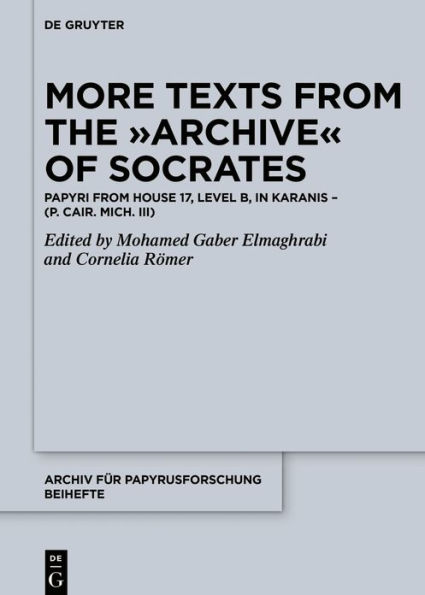As all texts written on papyrus from the Egyptian countryside, these texts give a new insight into the life of the people who dwelled in a typical village of the Roman period in Egypt. The texts show the cultural diversity of those who cohabitated, whether they had Greek or Egyptian names, whether their main gods were the crocodiles or Zeus. In the lives of all of them tax-paying played an important role, as well as caring for their cattle and fields, doing business, and fullfilling the obligations of the Roman government. In particular interesting is the personage of Socrates the tax-collector.
Since the ruins of Karanis are still standing (and worth a visit) with two nearly intact temples from the period of the texts, a more complete image of village life emerges from texts and the archaeology behind them. Papyrologists welcome every newly published text as a further stone of the mosaic image that they try to create of the past.
As all texts written on papyrus from the Egyptian countryside, these texts give a new insight into the life of the people who dwelled in a typical village of the Roman period in Egypt. The texts show the cultural diversity of those who cohabitated, whether they had Greek or Egyptian names, whether their main gods were the crocodiles or Zeus. In the lives of all of them tax-paying played an important role, as well as caring for their cattle and fields, doing business, and fullfilling the obligations of the Roman government. In particular interesting is the personage of Socrates the tax-collector.
Since the ruins of Karanis are still standing (and worth a visit) with two nearly intact temples from the period of the texts, a more complete image of village life emerges from texts and the archaeology behind them. Papyrologists welcome every newly published text as a further stone of the mosaic image that they try to create of the past.

More Texts from the Archive of Socrates: Papyri from House 17, Level B, and Other Locations in Karanis (P. Cair. Mich. III)
232
More Texts from the Archive of Socrates: Papyri from House 17, Level B, and Other Locations in Karanis (P. Cair. Mich. III)
232Hardcover

Product Details
| ISBN-13: | 9783110714289 |
|---|---|
| Publisher: | De Gruyter |
| Publication date: | 07/05/2021 |
| Series: | Archiv für Papyrusforschung und verwandte Gebiete - Beihefte , #45 |
| Pages: | 232 |
| Product dimensions: | 6.69(w) x 9.45(h) x (d) |
| Age Range: | 18 Years |
